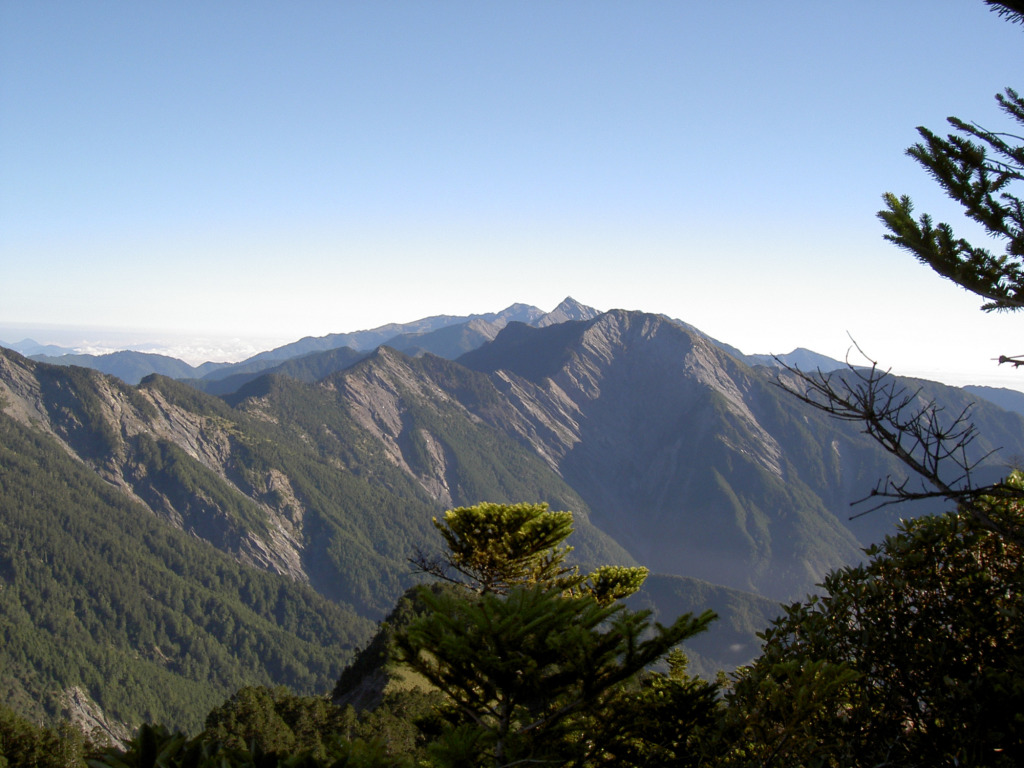Note:
The Mt. Bilu Day Ascent and Bilu-Yangtou traverse trails' trailhead from 820 Forest Road reopened starting from 9 December, 2021
- Due to the landslide at the entrance of 820 Forestry Road, the Taroko N. P. HQ has already provided a higher substitute road. Hikers are advised follow the signs. Do not go across the original route collapsed section of 820 Forest Road for your safety.
- The entrances and exits of the substitute roads of 820 Forest Road on the higher section are explained as follows. There are relevant guided signs No. 1-25 along the way to Bilu Mountain. All hikers are advised to follow the directions signs.
A: The stairs next to Dayuling parking lot (intersection of the Provincial Highway 8 and 14A) go up.
B: The wooden ladder is located at 0.3 kilometers along the 820 Forest Road.
Trail introduction
The Bilu-Yangtou traverse usually begins at the entrance to the 820 Forest Road, adjacent to the north exit of the Mt. Hehuan Tunnel at Dayuling. This route will travel eastwards from Mt. Bilu to Mt. Yangtou, and descends roughly 700 m over the course of the traverse. Hikers can also choose to start at the 132.4 km marker of Provincial Highway 8 and travel westwards towards Dayuling; however, due to more stringent constraints on water sources, distances to available campgrounds, and overall hiking time, most hikers will prefer an eastward route. At the Bilu river on the 820 Forest Road, which is the last and only available water source en route, hikers should refill at least 2 liters of water for cooking and hiking to last the remaining portion of the traverse.

The combination of a heavy pack (food plus tents), 2+ liters of water, and steep terrain for the majority of the traverse will test a true hiker's endurance. Many hikers choose this route to relish the great wilderness. Upon reaching the ridgeline, hikers have the opportunity to put down their rucksacks and observe the panoramic view at the Mt. Bilu triangulation point adjacent to the trail. A campground is located five minutes past the junction.
Geology and Ecology
Mt. Bilu: 3371 m (elevation); #39 in the Taiwan baiyue (a list of Taiwan's 100 most spectacular mountains)
Mt. Yangtou: 3035 m (elevation); #98 in the Taiwan baiyue. Mt. Yangtou gets its namesake ("sheep's head") from the shape of the mountain, which resembles a sheep's head.
Mt. Ju: a series of 7 peaks stretching across 2 kilometers, with the highest peak at 3276 m elevation. As its name suggests, the series of peaks resembles a sawtooth. Mt. Ju is one of the "9 cliffs" of Taiwan's mountains. Its forests are primarily comprised of Taiwan fir (Abies kawakamii), with Yushan bamboo (Yushania niitakayamensis) interspersed among the trees.
Resources